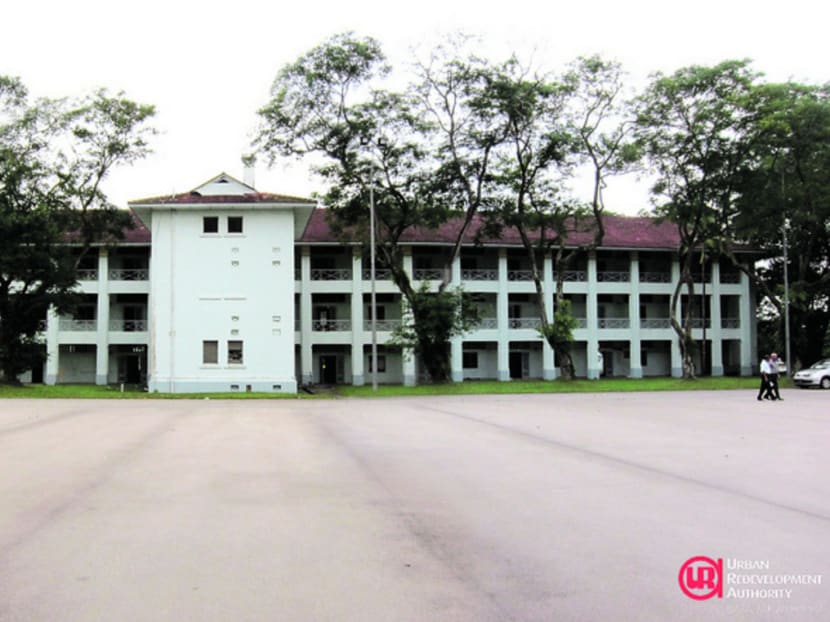URA launches heritage storyboard on S’pore’s first air defence unit
SINGAPORE — For Mr Patrick Peh, 70, the unveiling of a new storyboard at Block 450 Seletar East Camp — a conserved building that is now considered the oldest Royal Air Force (RAF) base in the Far East — was a homecoming of sorts.

View of Block 450 from the old parade square. Block 450 was the barracks for RAF personnel before eventually becoming the base for the anti-aircraft gunners from the RSAF’s 160 Squadron. Photo: URA
SINGAPORE — For Mr Patrick Peh, 70, the unveiling of a new storyboard at Block 450 Seletar East Camp — a conserved building that is now considered the oldest Royal Air Force (RAF) base in the Far East — was a homecoming of sorts.
Mr Peh, 70, was among the pioneers who built up from scratch the Republic of Singapore Air Force’s (RSAF) 160 Squadron, Singapore’s first and longest-serving air defence unit, at Block 450.
He was one of just four gunners who had gone to Switzerland in early 1970 to learn the workings of an anti-aircraft gun system in less than a month, after which they came back and imparted their knowledge by conducting the first course for commanders in November the same year.
On Saturday, Mr Peh, together with more than 400 past and present servicemen from 160 Squadron, relived these memories as the heritage storyboard commemorating the home of 160 Squadron was launched by Mr Chan Chun Sing, Minister in the Prime Minister’s Office.
Built in 1930, Block 450 was the barracks for RAF personnel, before eventually becoming the base for the anti-aircraft gunners from the RSAF’s 160 Squadron. Described by the Urban Redevelopment Authority (URA) as the “birthplace of Singapore’s air defence fraternity”, the building, together with the Block 179 and 32 bungalows, was gazetted for conservation last June.
Speaking to TODAY, Mr Peh, who was 25 years old in 1970, recalled his experience: “We had to do everything within such a short time. In just a few months, we had to work on the infrastructure, the logistics as well as the administrative functions to form the unit. We also had to learn the radar and computer systems, which as you know, in the 1970s hardly anyone understood computers!”
The four also had to write the training manuals for the system. “Although we all had a good background of weaponry, in those days, no one had any idea of ground-to-air gun systems,” he said. Eventually the four men, all trained in infantry, established the foundation for training successive generations of servicemen.
The storyboard, produced by the URA, the 160 Anti-Aircraft Alumni and 160 Squadron, is the first under a new scheme by the URA to seek proposals by the community on producing storyboards on conserved buildings, which focus on stories, the history of the area and its value to the community.
Mr Chan, who launched the storyboard, paid tribute to the fighting spirit of the pioneer generation. “Today we can live in peace, sleep well, because we know that even at hundreds of kilometres away before any plane (enemy) can come near our shores, we would have launched our air defence system in place .. as we continue to secure the skies of Singapore so that all Singaporeans can sleep soundly, through the hard work, vigilance and effort of all anti-aircraft gunners for generations to come,” he said.
The building is not open to the public, but the contents of the storyboard will be available for viewing on the URA web conservation portal by next week.
Associations or community groups which would like to have similar storyboards created for conservation buildings can contact the URA at URA_conservation_CSO [at] ura.gov.sg with a proposal for consideration.
CORRECTION: An earlier version of this story said that Mr Patrick Peh and three other gunners had conducted the first course for commandos in 1970. This is incorrect. They had conducted the course for commanders. We apologise for the error.






